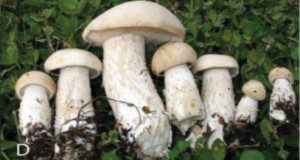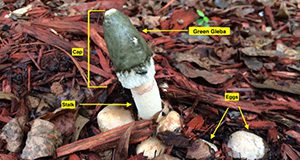Species in the Laetiporus sulphureus species complex, also known as “chicken of the woods” mushrooms, are wood-decay fungi that cause brown rot within the heartwood of their tree hosts. The common name “chicken of the woods” is given to some species in this group because they are tasty edible mushrooms. Several Laetiporus species have been harvested to use as food colorants, to dye natural products such as wool, and for human consumption. This new 4-page publication of the UF/IFAS Plant Pathology Department, written by Brianna Benitez, Claudia A. Paez, Matthew E. Smith, and Jason A. Smith, describes these fungi as well as their ecology, management, and potential edibility.
https://edis.ifas.ufl.edu/pp358
Tag: mushroom
Macrocybe titans: The Mushroom Giant of the Western Hemisphere
The aptly named Macrocybe titans, meaning “giant head,” is the largest known gilled mushroom in the Western Hemisphere. This species was originally described from Florida but can be found across the southeastern United States as well as the Caribbean, Central America, and parts of South America. These mushrooms are often found in clusters with the caps growing as large as 3 ft wide and 1–1.5 ft tall! This species was first discovered in Gainesville, Florida, and is generally found near buildings or roads. This new three-page publication of the UF/IFAS Plant Pathology Department describes these giant mushrooms, their discovery, and where to find them. Written by Elena Karlsen-Ayala and Matthew E. Smith.
https://edis.ifas.ufl.edu/pp356
Stinkhorn Mushrooms (Agaricomycetes: Phallales: Phallaceae)
Stinkhorn mushrooms are commonly found in Florida home gardens and along the Gulf Coast, and are known for their offensive, rotting odor. This 5-page document profiles the morphology, ecology, phenolology, toxicology, and treatment of this mushroom. Written by Eleanor Phillips, Jennifer L. Gillett-Kaufman, and Matthew E. Smith and published by the UF/IFAS Plant Pathology Department, December 2018.
http://edis.ifas.ufl.edu/pp345


